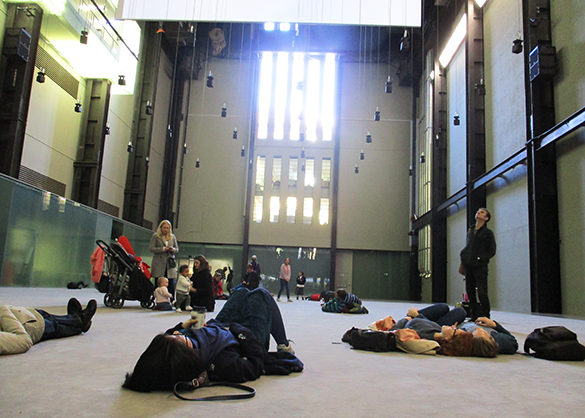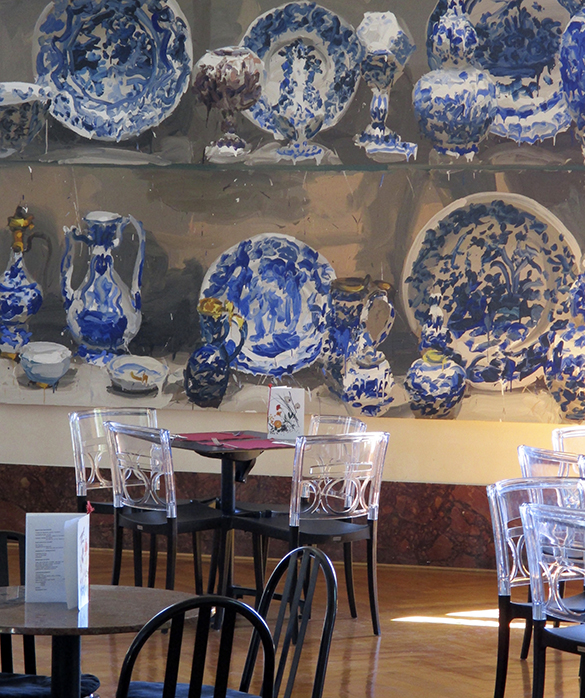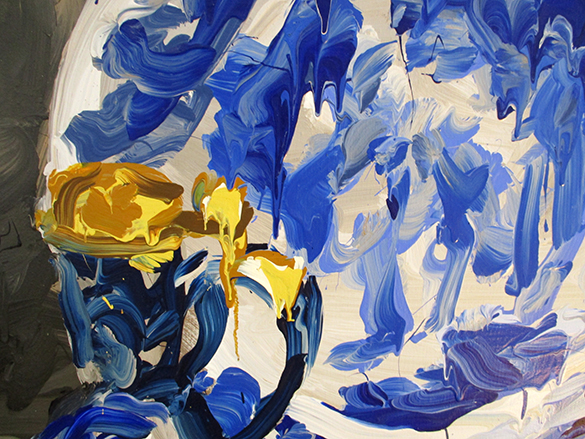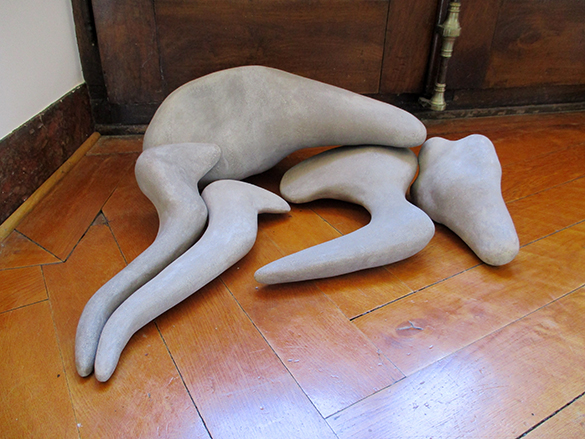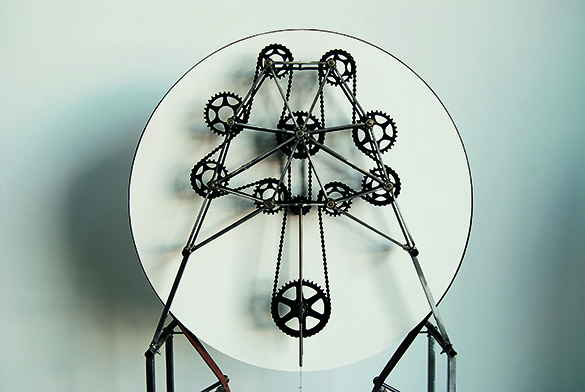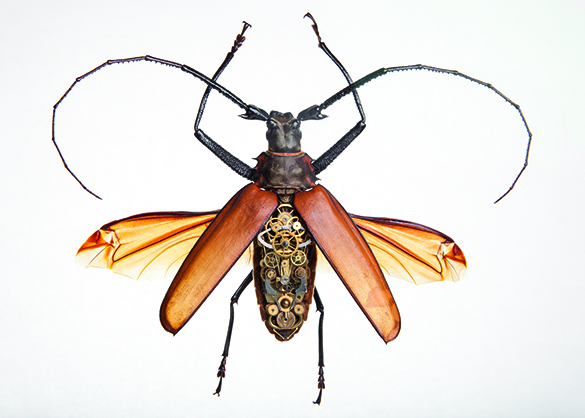It is 11.10 on 2 November 2016. I lie on a carpet in the Turbine Hall of the Tate Modern. (How I love this place!) I am here to experience “Anywhen.” Nothing much is happening. A mother feeds her baby. Some schoolchildren scrap and roll in the enormous space.
11.20 The lights go down. There is the sound of rain falling. Massive white screens hang enticingly from the ceiling. The screens move. Bright white light is projected onto one. There is the sound of waves breaking.
11.25 There is a flicker of excitement from the children. A large plastic fish is spotted moving high among the wires that suspend the screens and multiple loud-speakers.
11.30 I wait. I read the promotional blurb. “Prepare to have your senses activated and stimulated by a spectacular choreography of acoustics, sound lighting, flying objects and film, each connected to the other and playing their part in a far bigger score. Tate’s Turbine Hall becomes a universe of inter-related and connected events and parallel realities. Events will unfold anywhere.” I am indeed prepared.
11.35. I wait.
11.48. Something is about to happen. There is the sound of machinery. Vehicle reversing warning beeps take over. The screens descend to near-ground level. The hundred or so people waiting with me move with interest. A businessman in very smart pin-stripe suit and tie with poppy plants his brief case next to me and lies down.
11.52. Ah! Something flickers on-screen. A beautiful woman ventriloquist starts to talk into a microphone (without moving her lips!) about perpetuity, eternity, opportunity, complexity, cosmic inevitability and neuronal connectivity.
12.04 Her voice continues in the same vein. On screen is a watery surface. There are splishy. sploshy splashy watery sounds.
12.08 A non-human eye appears. This turns out be the eye of a beautiful cuttlefish-squiddy beast that swims around elegantly. It changes colour in dimply blue-yellow waves. The woman’s voice dies away. The businessman departs shaking his head.
12.10 The lights go up. The lights go down. The speakers crank out a kind of Darth Vader on Ecstasy voice.
12.15 Big lights strobe. The now-fed baby cries in confusion. The screens are still hanging there. The lights go up.
12.16 Nothing happens. I return to the blurb. “Anywhen is a site-specific exhibition that changes throughout the day and that will evolve during the six-month period of the commission. The exhibition is conceived as an automaton which guides the public through a constantly changing play of moving elements, light configurations and sound environments. The artist states that ‘the exhibition is a construction of situations or sequences in a non-linear narrative’.”
12.20 Still nothing. “The commission responds to the Turbine Hall’s position at the centre of the museum, an open space connected to the city itself. The artist combines aspects of chance and control: the sequences of events are triggered by software which is informed by micro-organisms. These react to and activate elements of the commission through a bioreactor visible at the far end of the Turbine Hall.”
12.22 The lights and screens go up together. The music of a not-so-talented busking guitar player- singer fills the hall.
12.25 His voice is drowned out by what sounds like an underground train passing.
12.26 He stops playing. One person claps.
12.28. The screens descend again noisily. Big machinery sounds. The screens go up.
12.30 I take a photo. I’m not sure why ….. or of what.
12.32 Another fish passes by. A little lower this time. Airplane sounds. Lights flash.
12.35 Electronic buzzing. Ticking noises. I read more. “Philippe Parreno is a French avant-garde artist who came to prominence in the 1990s and is perhaps most widely known for his feature film Zidane: A 21st Century Portrait. Parreno works across film, video, sound, sculpture, performance and information technology and collaborates extensively with musicians, scientists, architects and writers.”
12.40 Just sound. Wait! The screens are moving again.“The Hyundai Commission is a series of site-specific installations by contemporary artists in Tate Modern’s iconic Turbine Halll. It is made possible by a unique long-term partnership between Tate and Hyundai Motor.” I remember the mind-boggling work of Abraham Cruzvillegas.
12.50 I am caught between mild intrigue, mild irritation, mild boredom and mild disappointment. Has the last hour enriched my life? Not really. Have my senses been activated and stimulated? Not really. Phrases from my yesteryear school reports come to mind: “Could do better.” “Room for improvement.””Has difficulty focusing.” “Shows occasional encouraging signs,”
12.59 I think maybe I am missing something. Caffeine maybe? But I’ll give it another go tomorrow.

